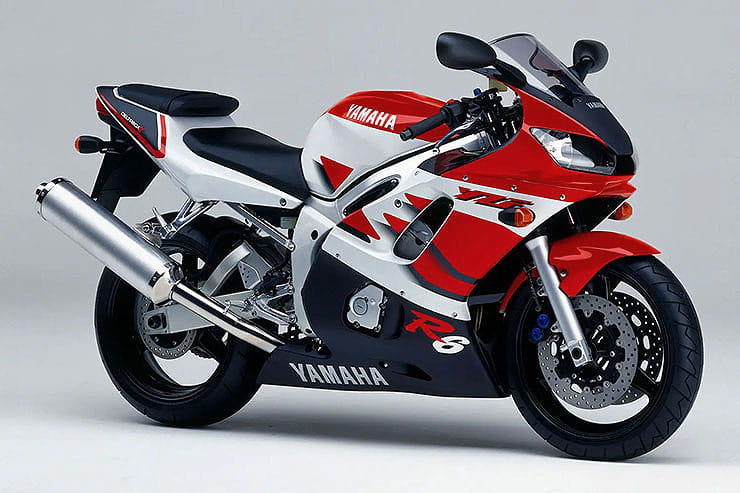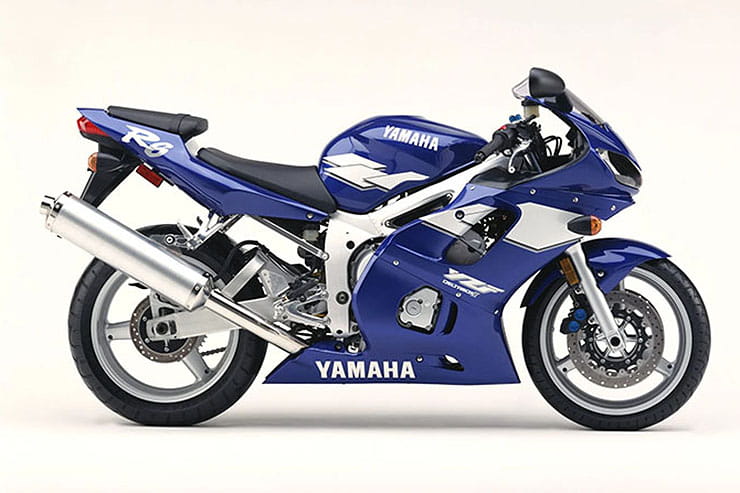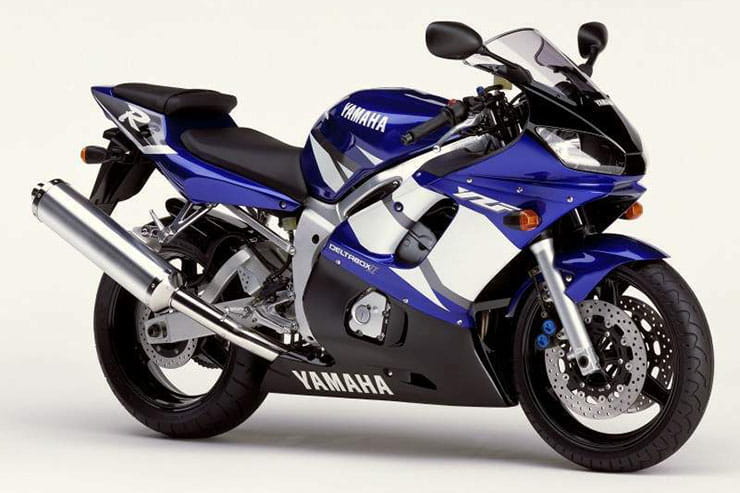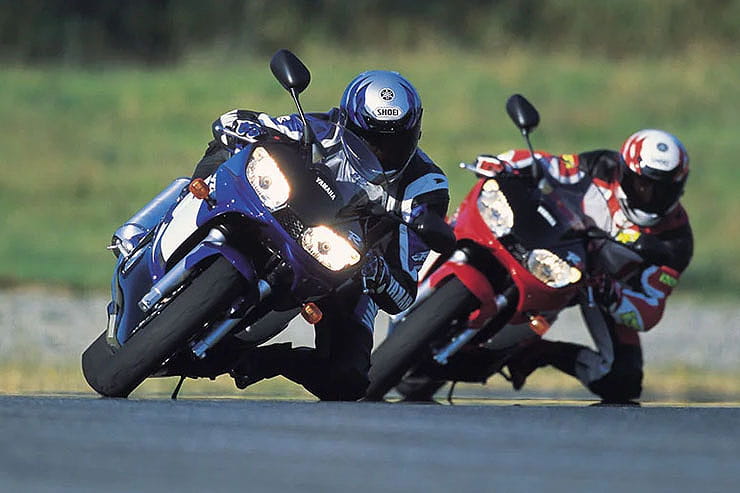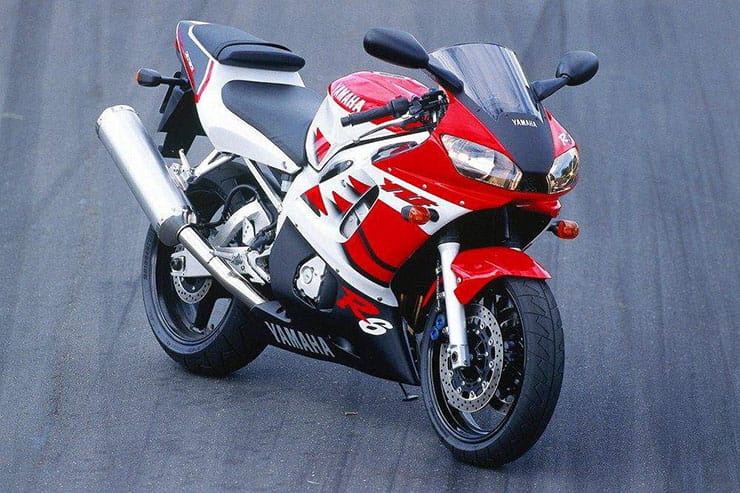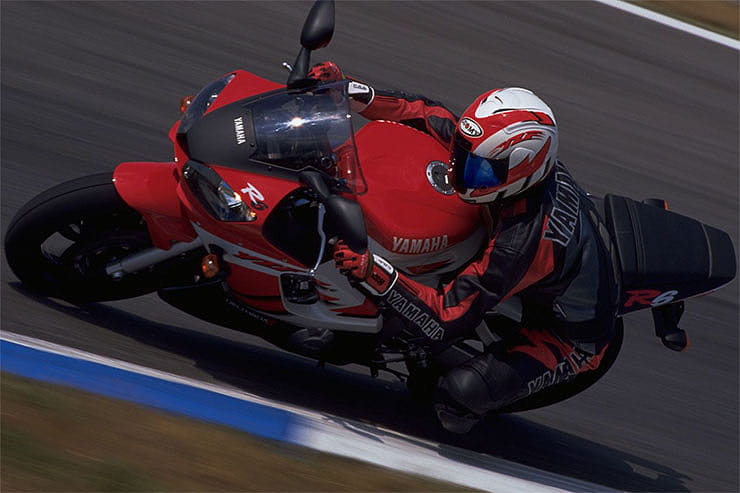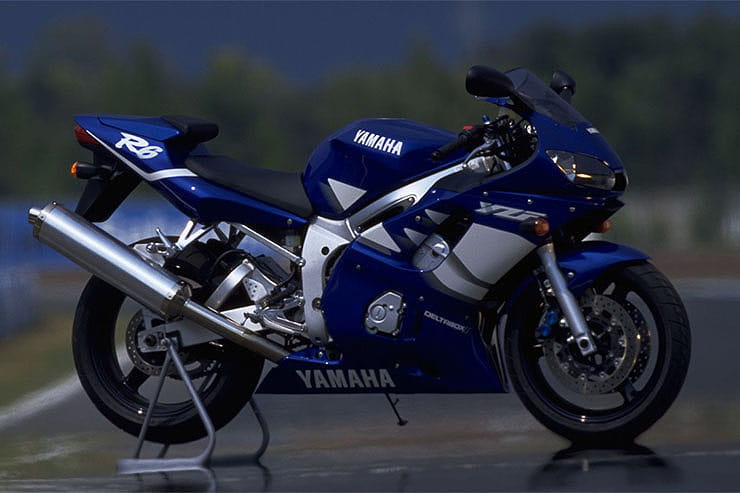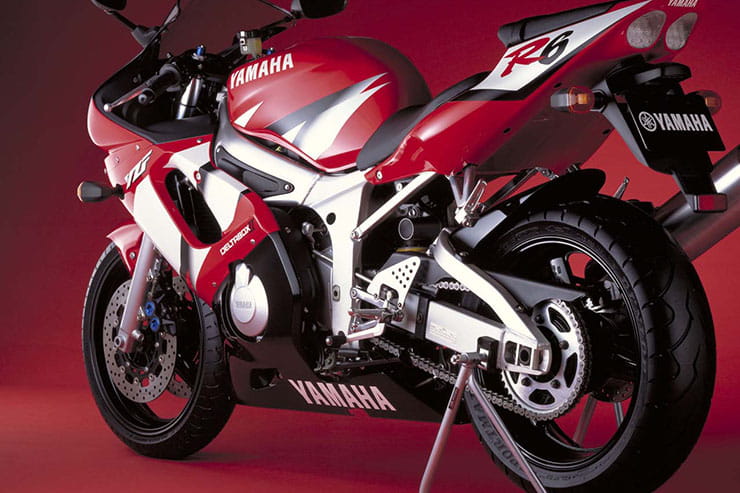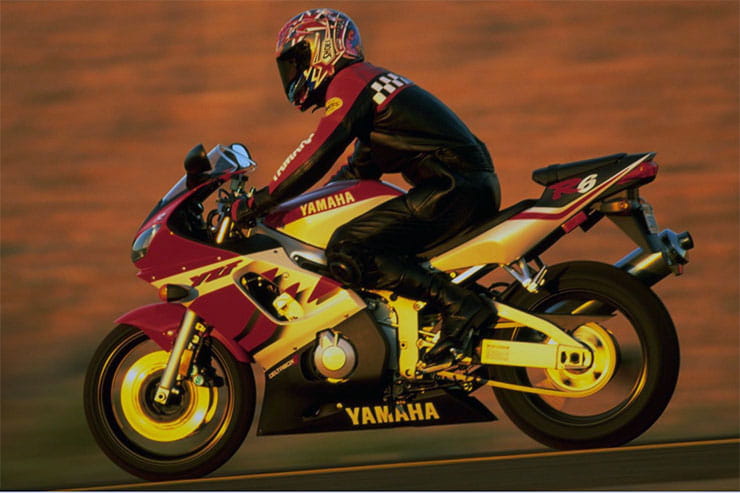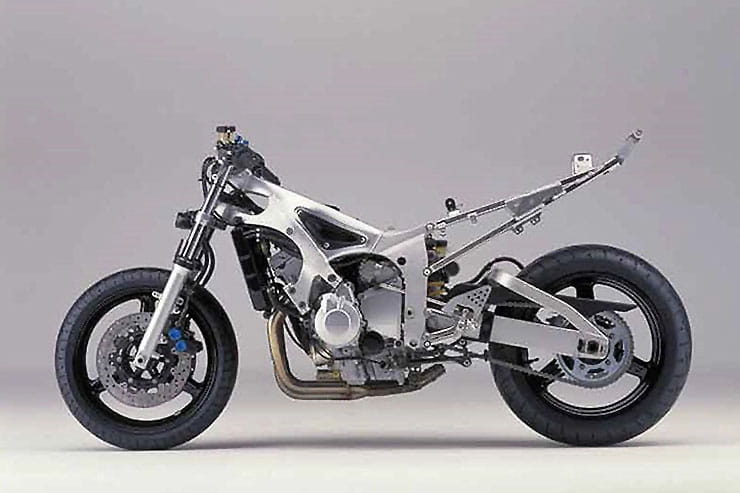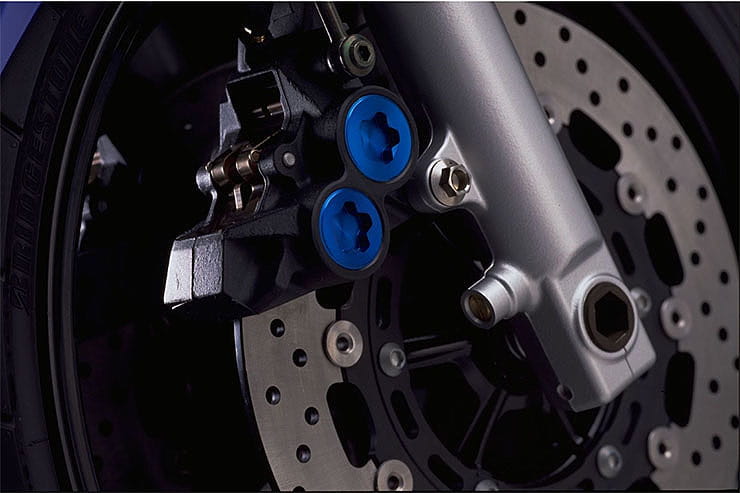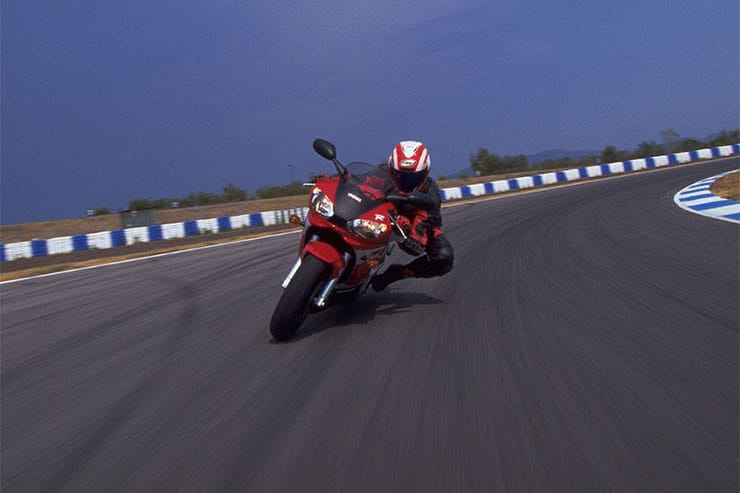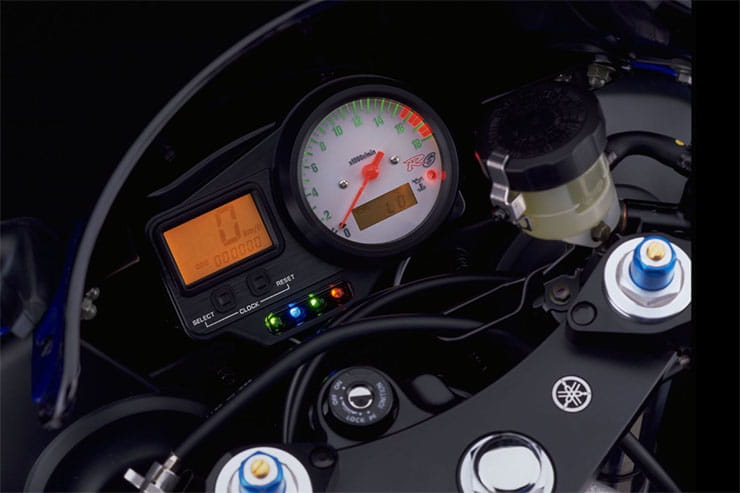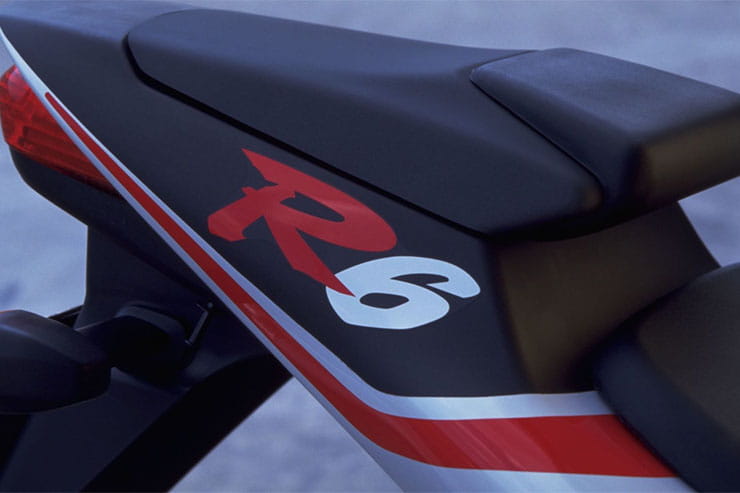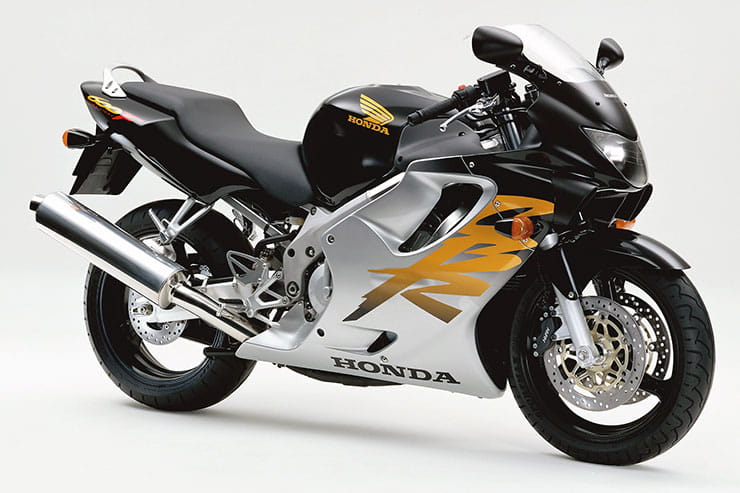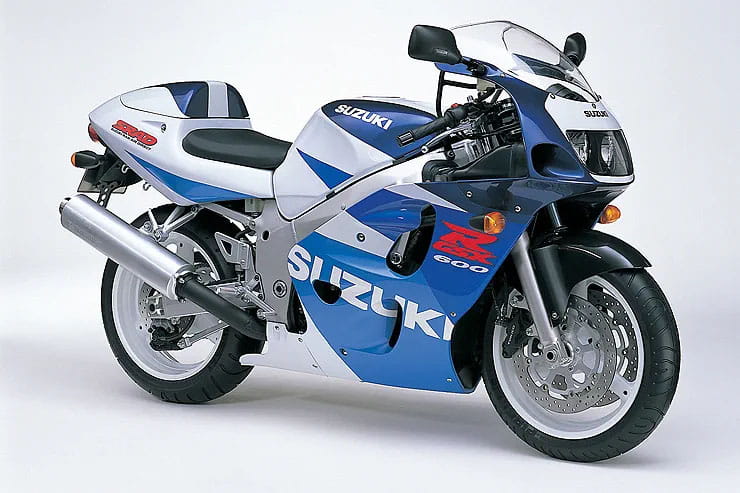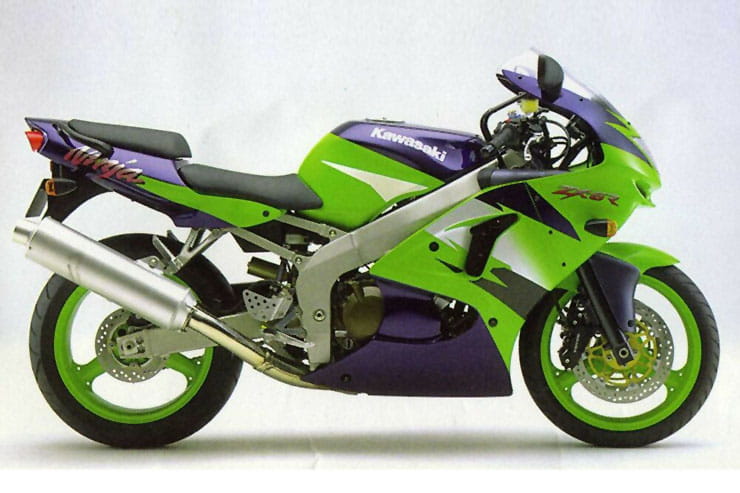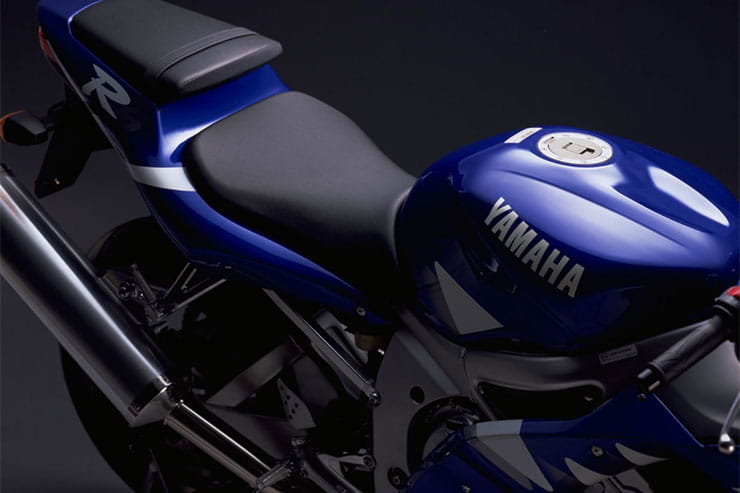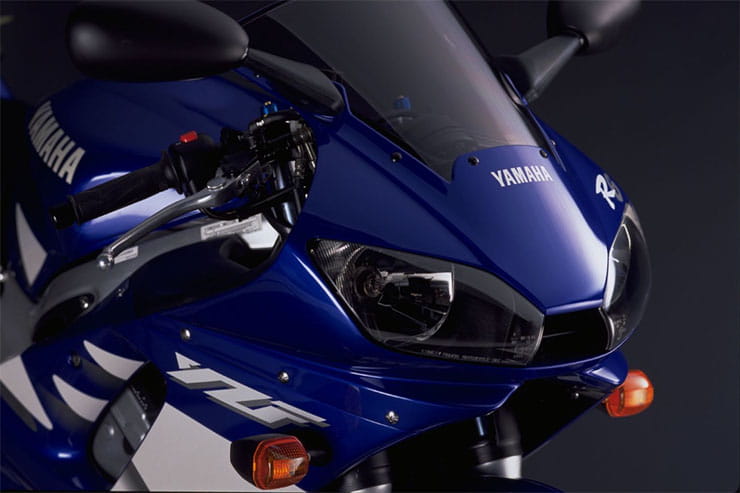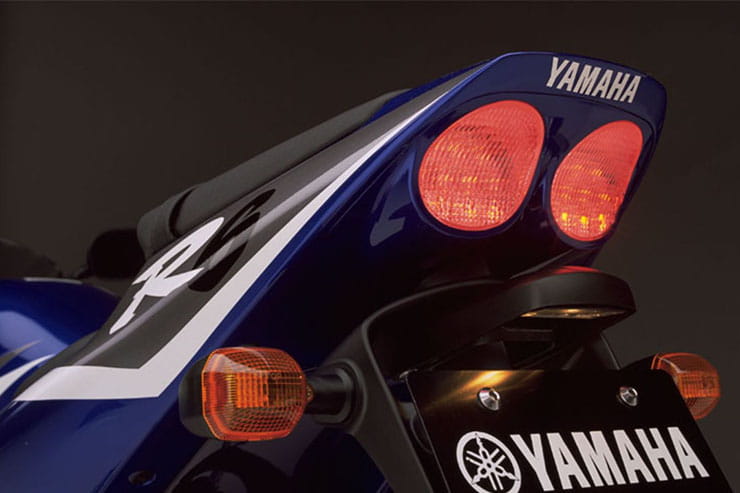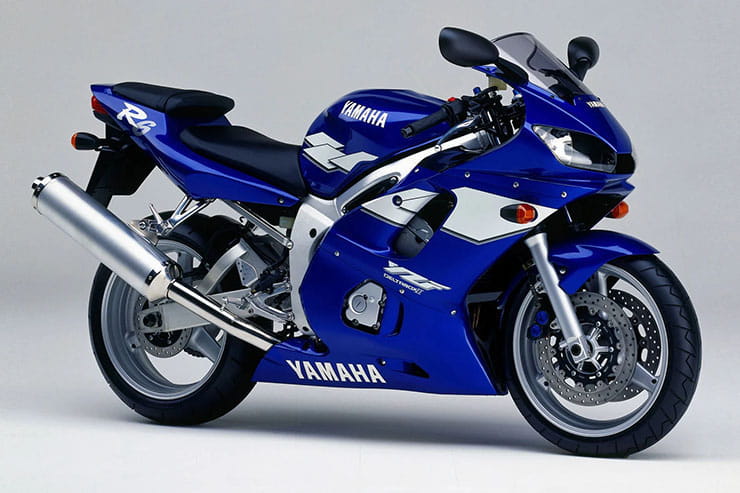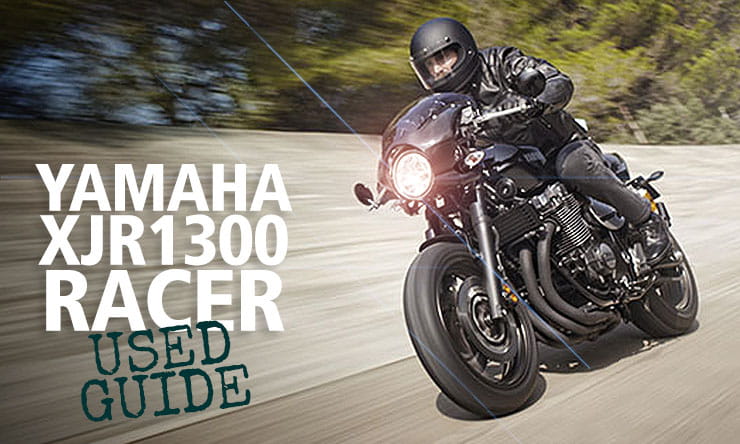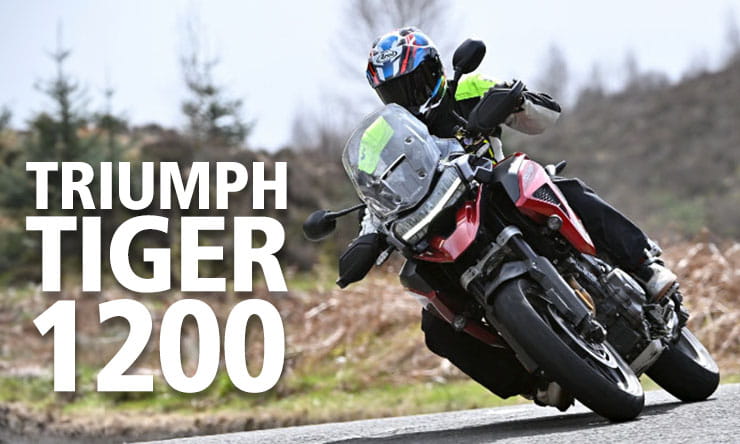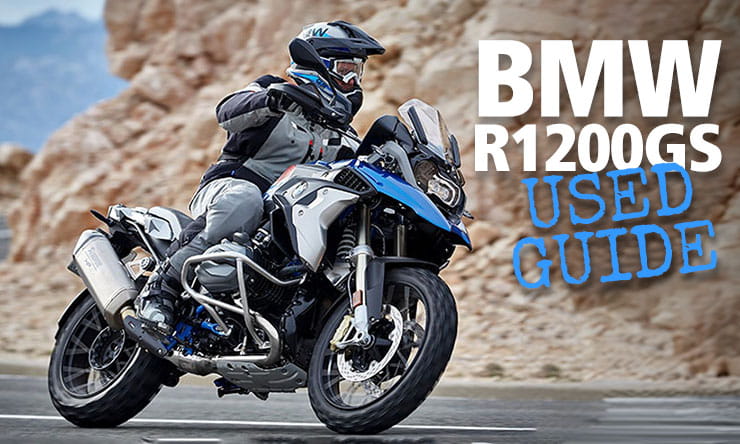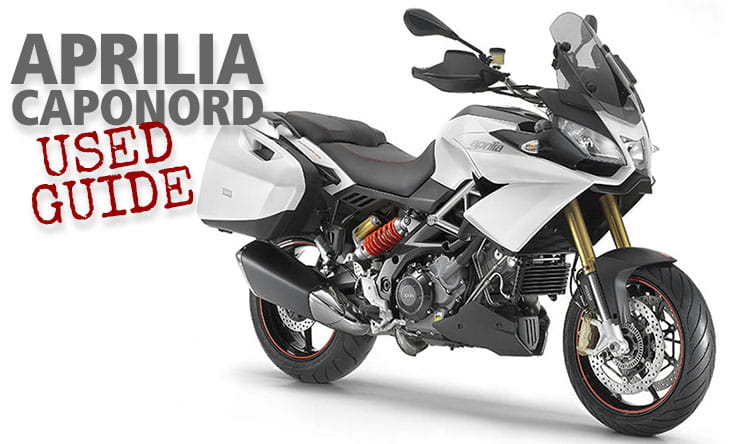Price: £1500-£3000 | Power: 119bhp | Weight: 169kg | Overall BikeSocial Rating: 4/5
Yamaha’s YZF-R6 lit a rocket under the Supersport class when launched back in late 1998. Light, sporty, powerful and obviously from the same stable as the YZF-R1, this 600 did away with the class’s previous reliance on penny-pinching production, instead offering 750-class performance in a package that worked for road riders and racers alike. With a claimed 119bhp at the crank (almost 110bhp at the wheel) this sub-170 kilo middleweight could crack 160mph and keep bikes like Kawasaki’s ZX-7R and Yamaha’s own YZF750R honest at a price that guaranteed instant success.
Cost, or lack thereof, is still very much at the heart of the YZF-R6’s appeal. The lively performance and exciting ride are still there 25 years on – provided you buy a lovingly kept example, of course – and yet with as little as £3000 securing a minter this Supersport sensation is an outstanding bargain in today’s used market.
Up until the arrival of the R6, Honda’s CBR600F had enjoyed more than a decade atop the Supersport throne – with only Kawasaki’s ZX-6R periodically nibbling at its feet. Yamaha’s early efforts (the FZR600 Genesis and FZR600R) had sporting appeal in spades but lacked the Honda’s do-it-all ability. An attempt in 1996 to go head-to-head with the CBR, with the softer YZF Thundercat, produced only moderate success for Yamaha. The R6 was a whole new proposition, however.
Unlike the T-Cat, the YZF-R6 was all-new, a blank sheet design based around three core principles: the highest power output, lowest weight, and greatest agility in class. To achieve this, Yamaha’s engineers did away with steel chassis of old and designed a new, compact all-aluminium Deltabox frame to match an engine with a target output of 120bhp.
What set the YZF-R6 apart from its rivals was a key ingredient specific to the design team’s target – excitement. With peak power at 13K and a redline of 15,500rpm, laser accurate steering and gazellesque agility, the R6 could scythe its way through turns quicker than you say ‘apex’ and eat up straights in an explosion of revs. There were concessions to cost, of course, like conventional telescopic forks and a simple shock – albeit both fully adjustable – plus an end can made of metal rather than costlier carbon. But other than that it was hard to see where the accountants had triumphed over the engineers.
Slick touches were myriad, from the neat R1-style digital dash and milled top yoke, to the heftily braced aluminium swingarm, blue-spot caliper brakes, business-like twin headlamps, and thoughtfully design cockpit. Rather than being a budget, throw away stepping-stone to bigger things, as was the certainly the case with Yamaha’s previous 600s, the YZF-R6 was a genuinely capable, desirable and brilliant sports bike in its own right that has gone on to enjoy 25-years and counting of production, numerous National and World Championship titles and even replica status to the great Valentino Rossi.
If any middleweight Supersport machine deserves modern classic status, it’s surely the first-generation Yamaha YZF-R6.
PROS & CONS
- Exceptional value for money; bhp and grins per £ that’s hard to beat
- Sporty yet comfortable – a great allrounder, especially compared to later models
- More character and more fun than an equivalent CBR600F
- Lots of them have been raced and/or crashed so finding a minter can be hard
- Can get unstable and slappy on poorly surfaced roads
- Exposed metal surfaces are a magnet for corrosion
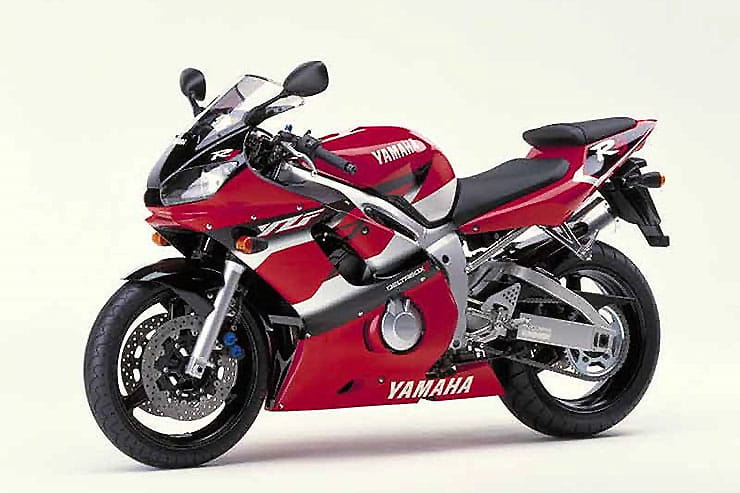
Yamaha YZF-R6 (1999-2002) Price
The original Yamaha YZF-R6 ran from launch in late 1998 to the end of 2002 as essentially the same model receiving only minor updates along the way, so values depend more on condition, originality and mileage than year. That said, mint, low mileage first year R6s are likely to command more than three-years younger equivalents – potentially up to £400-£500 more to the right buyer.
Quality aftermarket pipes are worth having (Akrapovic, Arrow, Micron, V&H, Yoshimura etc), as are suspension upgrades – better shocks and reworked forks – but cheap, bolt-on tat like coloured screens, mini winkers, fibreglass bodywork, fake carbon, stubby end cans and badly executed ‘race replica’ paintwork all chip away at a bike’s value unless you can get the original parts thrown into the deal.
First year R6s came in three colour options: red, white and black, blue and silver or silver, black and orange – the latter being the least popular by far. For 2000, the red, white and black option remained unchanged, while the blue bikes gained black wheels and updated graphics. The silver option was dropped. Other than minor gearbox mods to improve engagement, 2000 R6s are the same as 1999 models.
Yamaha tweaked the YZF-R6 for 2001 with a number of subtle changes, including a lighter aluminium steering stem and ignition coil, a more compact battery, LED tail lights, lighter and strong forged pistons and conrods to improve response, revised ignition and fuelling settings, a further tweaked gear selector, R1-style mirrors and a painted under tray. All of which shaved 2 kilos off the dry weight, bringing it down to 167kg. New colours saw a red and black offering, and the blue option gain a black bellypan.
YZF-R6 values: Rough £1200-£1700; Tidy £2000-£2500; Mint £2500-£3000
Yamaha YZF-R6 (1999-2002) Engine and Performance
Similarities between the YZF-R1 and YZF-R6 ran far deeper than outward looks and name. The R6’s engine borrowed its compact dimensions and layout wholesale from its larger stablemate. Stacking the gearbox vertically behind the block made the R6 power unit the most compact in class, while the one-piece case/cylinder casting also mirrored the bigger bike’s design.
The bike’s class-leading performance was achieved by a combination of technology: lightweight, forged pistons with low friction rings, plated bores, dual electrode plugs fed by individual plug coils, forced air induction into a pressurised airbox, 37mm flatslide carbs, and 750cc-sized clutch. The DOHC top end runs 16 valves rather than 20 as per the R1, due to the unit’s modest dimensions.
Performance is peaky (unlike the R1 there’s no EXUP valve to graduate delivery) and the engine needs at least 8000rpm on the dial to get into its groove, but beyond that delivery is vivid, frantic and fun. Yamaha claimed 119bhp@13,000rpm and 68lb.ft@12,000rpm.
Yamaha YZF-R6 (1999-2002): Handling & Suspension
Yamaha was quick to boast about the YZF-R6’s handling prowess in early promotional material, claiming that “with its ultra-short wheelbase, GP-developed Deltabox II aluminium chassis and long, truss-type swinging arm the R6 could slice through bends like nothing else”. Far from hyperbole, Yamaha’s assertion was indeed credible. At 1380mm the R6’s wheelbase was the shortest ever seen in the class, and the bike’s agility was sublime.
But like an R1, an R6 can also be twitchy – occasionally lock-to-lock frisky – if asked to deliver full drive over an uneven surface. A steering damper does help, but it also robs the steering of its light, pinpoint feel.
The stock suspension was ok when new, but will undoubtedly require a refresh by now if previously untouched. Replacement shocks are easy to find; getting forks revalved is simple enough to get done too. Budget between £500-£800 to refresh both ends.
Yamaha YZF-R6 (1999-2002): What to look for
Crash damage: Many first gen R6s were raced and/or ridden hard so the possibility that the bike you’re looking at has been dropped or thrown down the road is fairly high. Look for scuffed footpegs, bar ends, levers, silencers and engine covers, plus bent bars, snapped lock stops, dented/twisted frames.
Nasty bolt-on tat: Nothing ruins or devalues an older bike like cheap, bolt-on tat – coloured screens/light covers, micro indicators, poorly fitting huggers, and stubby end cans. Don’t assume you’ll be able to replace them cheaply or easily. Get the stock parts thrown in as part of the deal. If not, haggle like mad or walk away.
Thirst for oil: Yamahas have a reputation for using oil. I’ve owned two first-gen R6s, both from new, and they both liked a drop of lube every 1000 miles or so. Bikes that have stood for a while can be worse; the rings gum into their lands until finally releasing after a bit of use. A quality semi or fully synthetic 10/40W will keep your R6 sweet. Drop and change the oil and filter every 3000 miles.
Corrosion: General finish is good, but there are weak points. OE exhausts lose their lustre very quickly; once corrosion takes hold it’s very difficult to reverse its effect. Engine paint chips and flakes over time. The blue-spot calipers require a strip and clean at least bi-annually. Only a full resto will bring a tatty R6 back up to spec, so avoid cheap projects.
Front sprocket: The retaining nut has been known to work loose. Left to do its worst, the resulting escaping sprocket and chain can smash the crankcases to bits, wreck the swingarm and, worst case scenario, lock the back wheel.
Gearbox: Second gear can fail on first gen R6s, so go for a test ride and put it under load. If it jumps out or is reluctant to shift between first and second, you’re looking at a potentially costly gearbox strip. Yamaha sorted the issue with the Gen 2 bikes, fitting five rather than three engagement dogs on the gears.
Electrics: Almost all electrical faults can be traced back to bad earths. 20 years is enough time for even minor corrosion to cause issues so clean all earthing points when you buy any old bike. Issues like failing reg/recs, alternators and coils are known on early R6s and are usually the result of the aforementioned problem.
Honda CBR600FX-FY, 1999-2000 | Approx Price: £1800-£3000
Power/Torque: 110bhp/47.9lb-ft | Weight: 168kg
First generation alloy beam framed CBR6. Light, compact and sporty, yet an excellent allrounder to boot. Comfier seat than an R6, and more practical with a centrestand, but lacks the Yamaha’s glamour and obvious link to its big brother.
Suzuki GSX-R600RV-RY, 1996-2000 | Approx Price: £1500-£2800
Power/Torque: 109.7bhp/50lb-ft | Weight: 174kg
Poor man’s GSX-R750 SRAD. Shares its frame and styling with the 750, but cheap suspension, lacklustre brakes (even from new), average build quality and an all or nothing engine do little to promote this GSX-R against it rivals or larger sibling.
Kawasaki ZX-6R G1-G2, 1998-1999 | Approx Price: £1500-£2900
Power/Torque: 107bhp/48lb-ft | Weight: 176kg
Underrated middleweight that combines strong performance with a do-anything capability that almost matches the Honda. Less likely to have been owned by a mouth-breather than the Suzuki and easier on the eye than later J model ZXs.
Yamaha YZF-R6 (1999-2002): Verdict
A game-changing 600 that put Yamaha right back in the mix. Almost as practical as a CBR600 (buy a paddock stand and the lack of a centrestand won’t matter), yet way more exciting to ride. Finding a good one is the real task. R6s encourage mischievous behaviour so many have been thrashed, raced and crashed. Go for as standard an example as you can find – preferably one with FSH that’s been owned by a monk – and you’ll have an absolute riot aboard a thoroughbred supersport legend that costs less than a brand-new Chinese 125. What’s not to like?
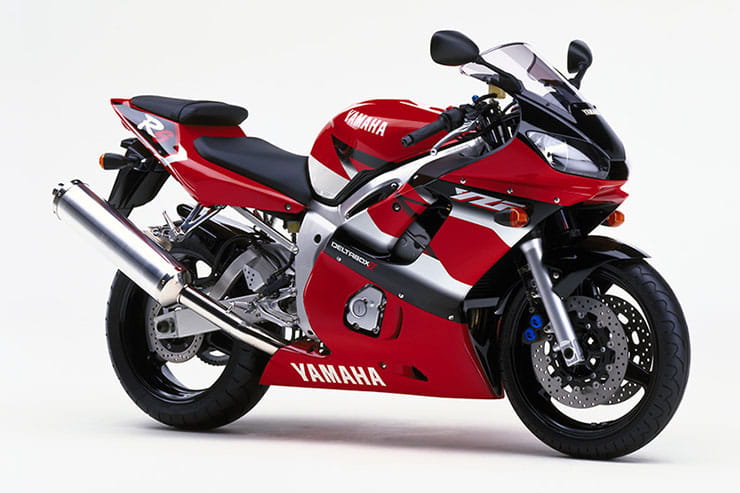
Yamaha YZF-R6 (1999-2002) – Technical Specification
|
Original price
|
£6299
|
|
Current price range
|
£1500-£3000
|
|
Capacity
|
599cc
|
|
Bore x Stroke
|
65.5mm x 44.5mm
|
|
Engine layout
|
liquid-cooled, DOHC, 16v inline four
|
|
Power
|
119bhp (kW) @ 13,000rpm
|
|
Torque
|
68lb-ft (Nm) @ 12,000rpm
|
|
Top speed
|
161mph
|
|
Transmission
|
6-speed; wet multiplate clutch, chain final drive
|
|
Average fuel consumption
|
43mpg
|
|
Tank size
|
17 litres
|
|
Max range to empty (theoretical)
|
160 miles
|
|
Reserve capacity
|
12 miles
|
|
Rider aids
|
n/a
|
|
Frame
|
Aluminium alloy Deltabox beam
|
|
Front suspension
|
43mm telescopic forks
|
|
Front suspension adjustment
|
Preload, rebound and compression damping
|
|
Rear suspension
|
Monocross monoshock
|
|
Rear suspension adjustment
|
Preload, rebound and compression damping
|
|
Front brake
|
2 x 298mm discs, 4-pot calipers
|
|
Rear brake
|
220mm disc, 2-pot caliper
|
|
Front tyre
|
120/60 ZR17
|
|
Rear tyre
|
180/55 ZR17
|
|
Rake/Trail
|
24°/ 81mm
|
|
Dimensions (LxWxH)
|
2024mm x 691mm x 1098mm
|
|
Wheelbase
|
1380mm
|
|
Ground clearance
|
135mm
|
|
Seat height
|
820mm
|
|
Kerb weight
|
169kg dry/195kg wet
|
Looking for motorcycle insurance? Get a quote for this motorbike with Bennetts bike insurance



